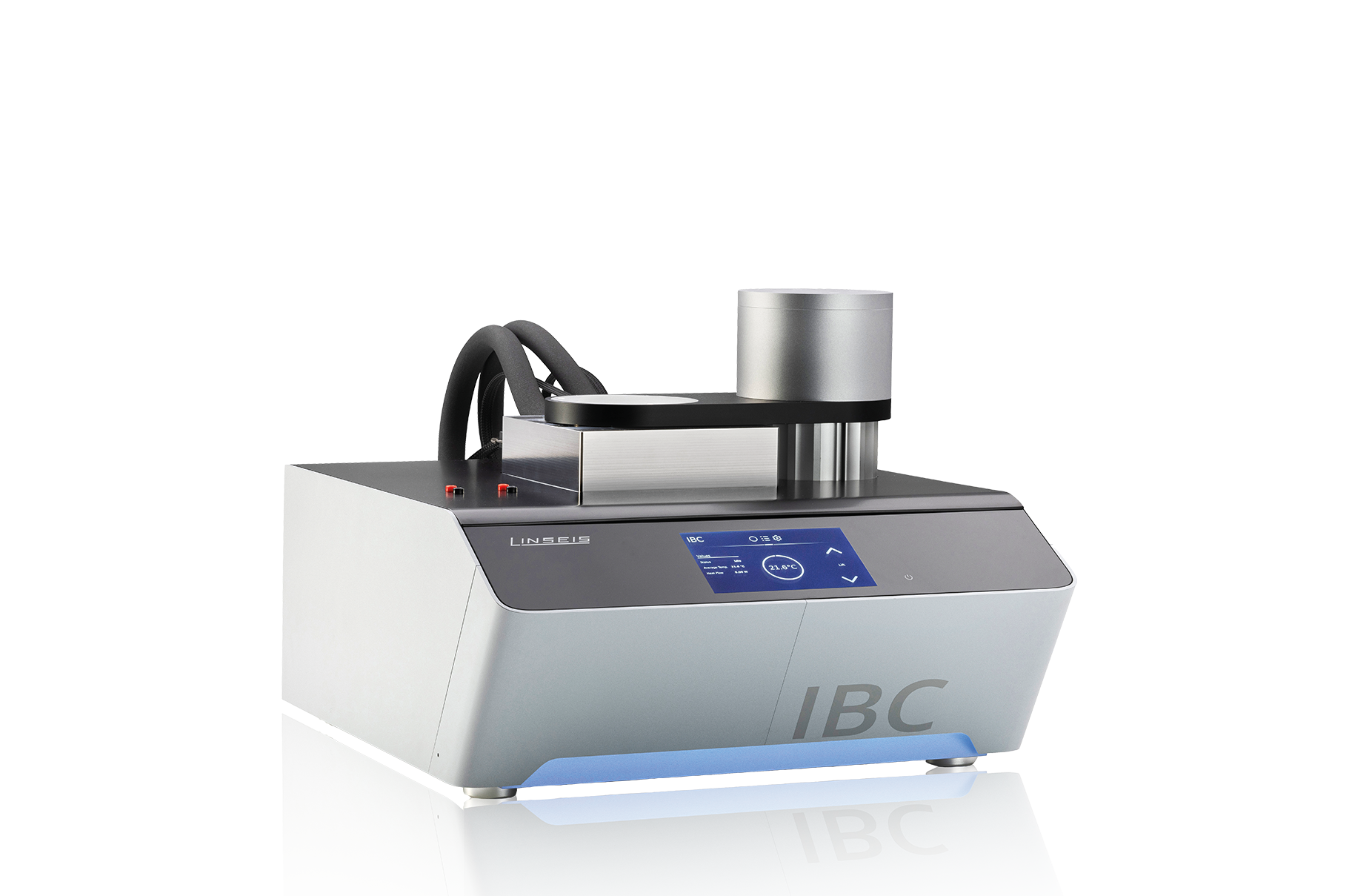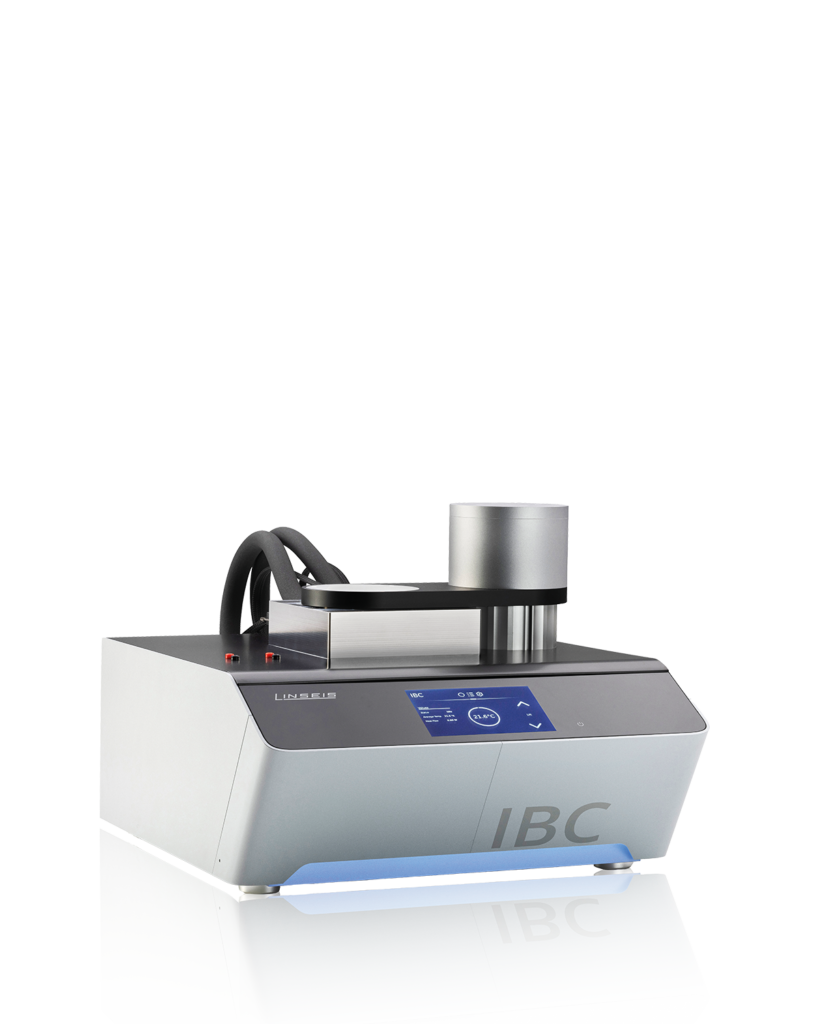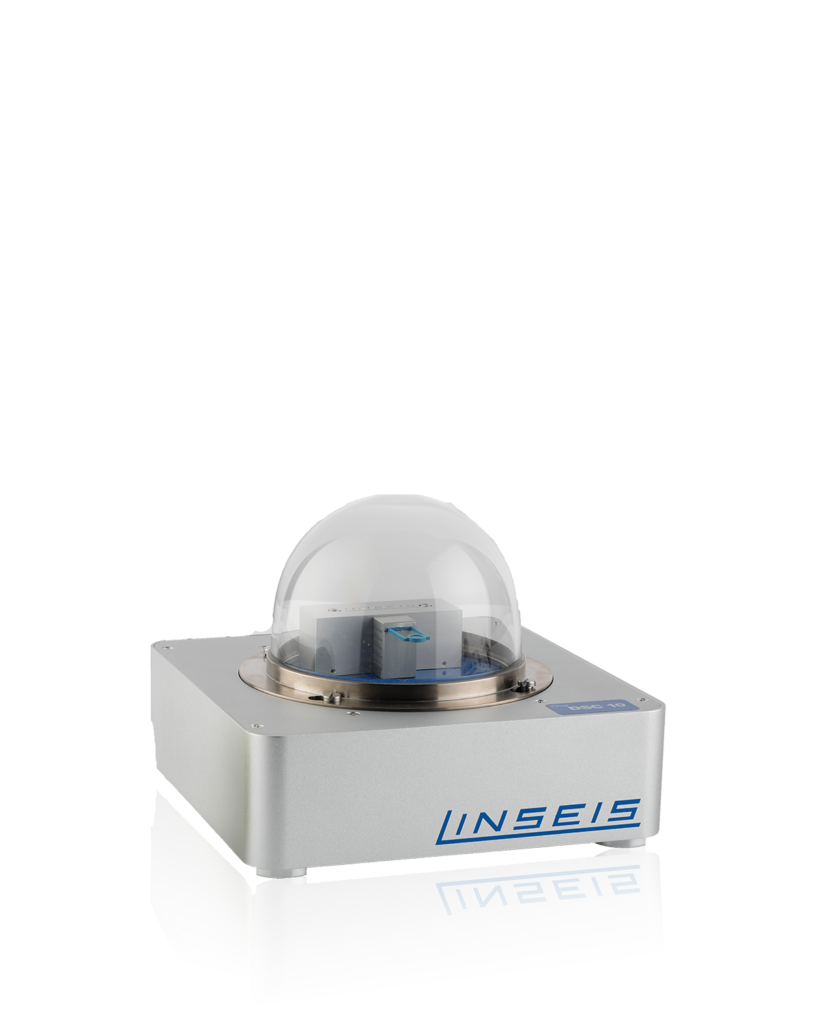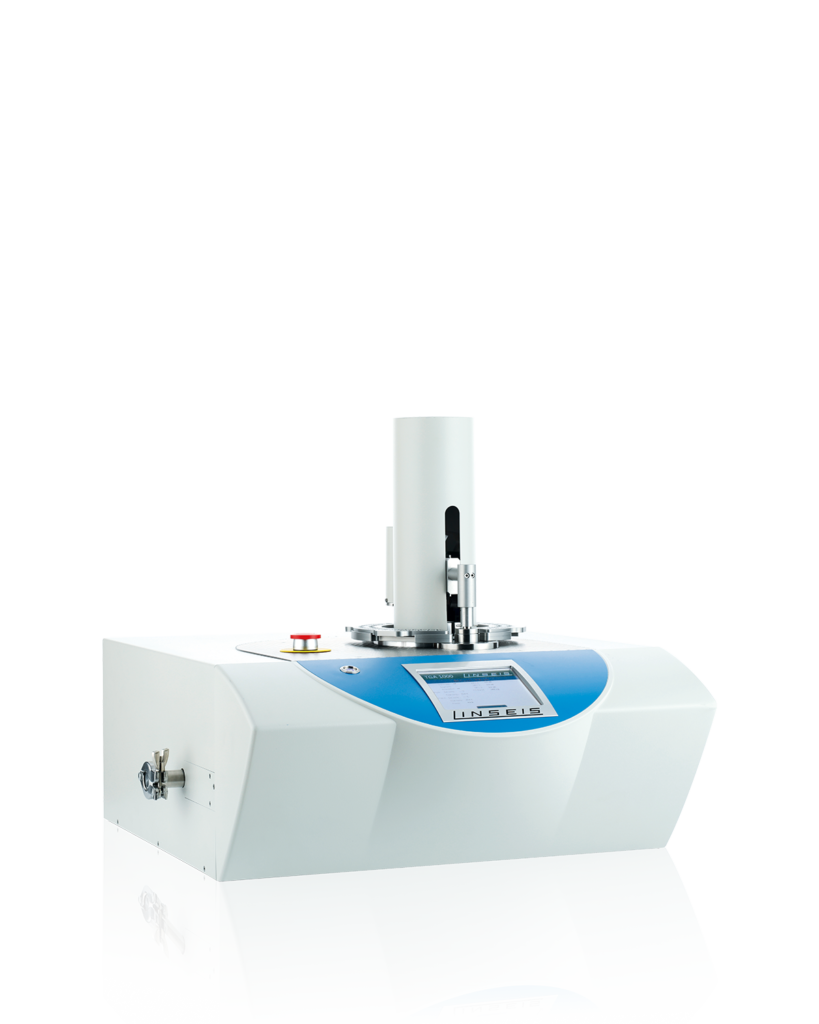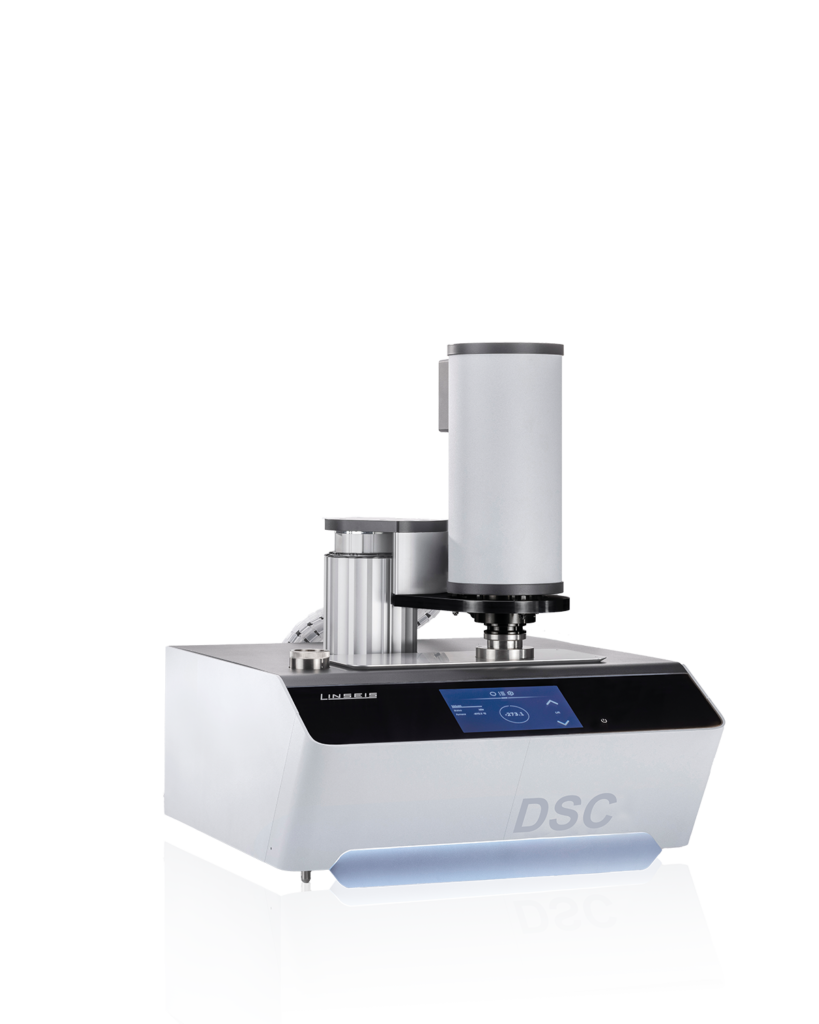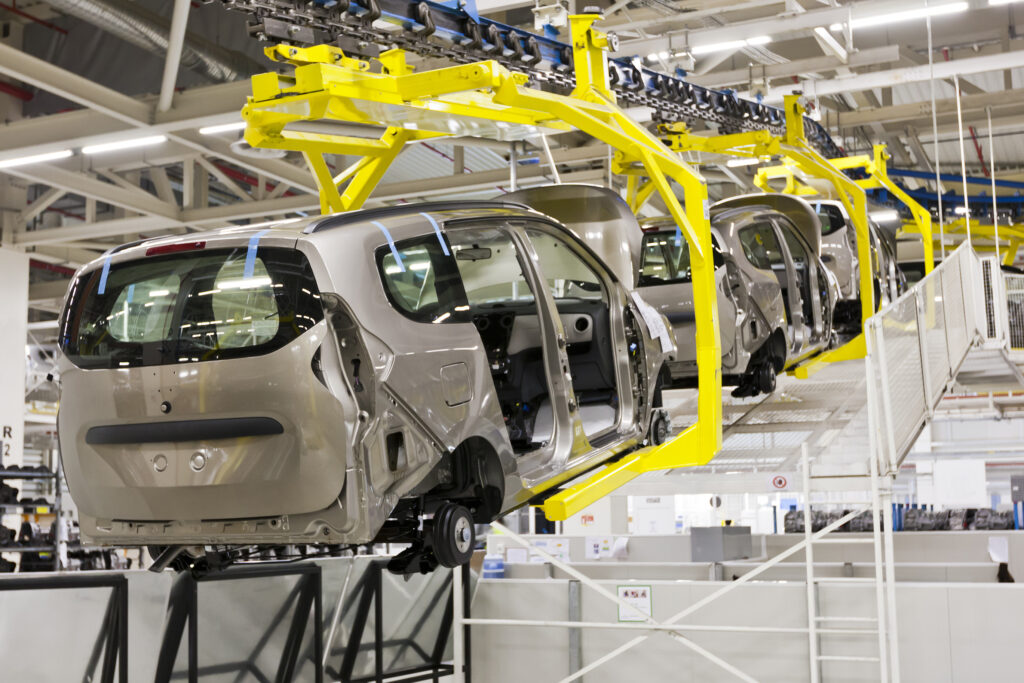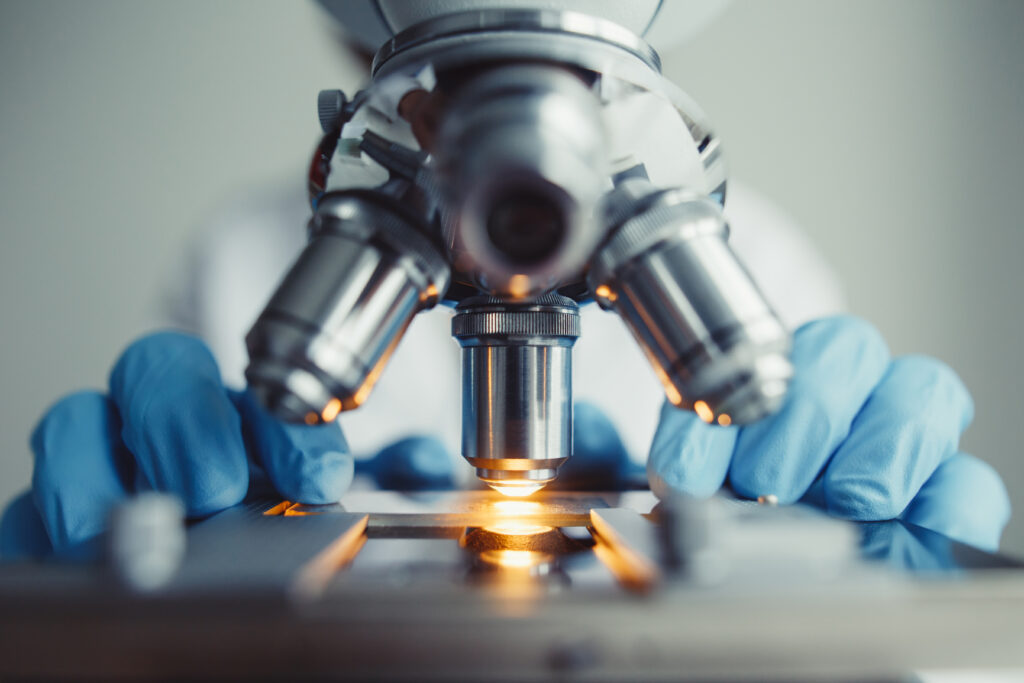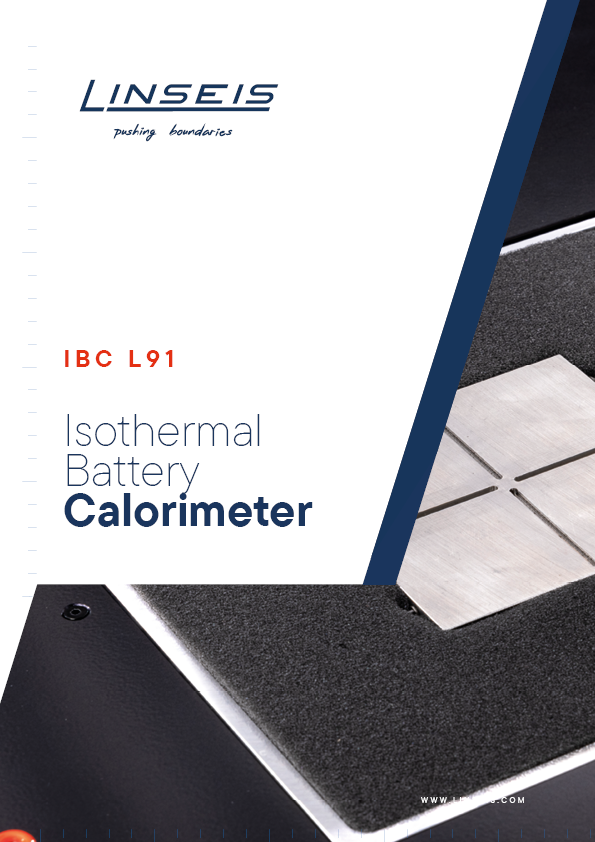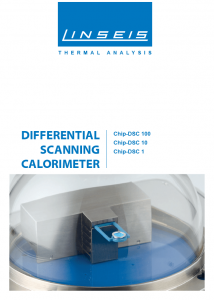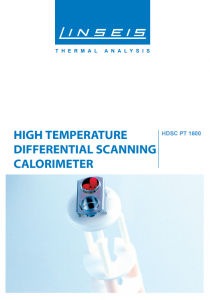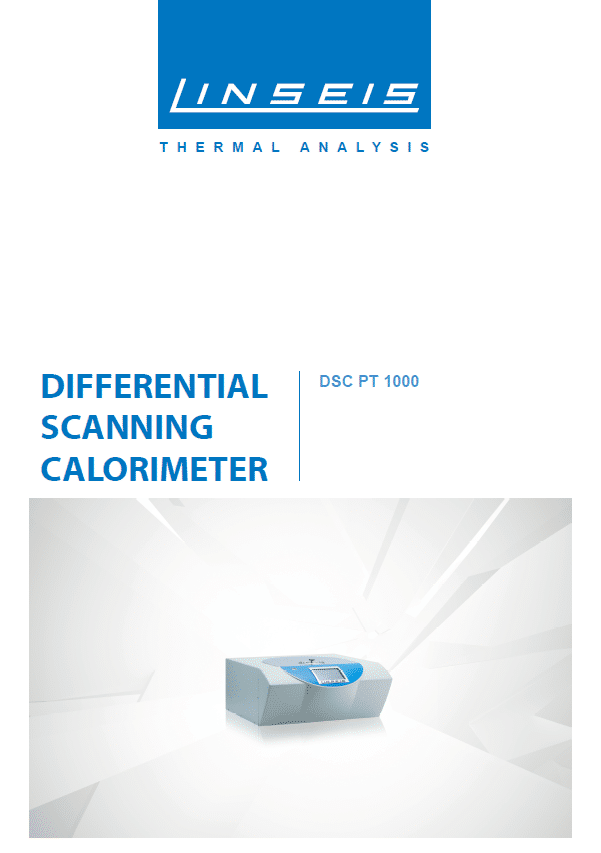Calorimetry - heat development, measuring methods, energy measurement
Linseis calorimeter series
IBC L91 - Isothermal Battery Calorimeter
Calorimetry is the science of measuring the amount of heat released or absorbed during biological, chemical or physical processes. This technique, founded by Joseph Black in 1756, has many applications in science and industry.
Linseis produces a wide range of calorimeters, including particularly powerful solutions in differential scanning calorimetry (DSC). Our devices cover a wide range of applications and offer the highest precision.
We now also offer a battery calorimeter that has been specially developed for investigating the heat development of batteries.
Measured variables and applications:
- Determining the heat of reaction: measuring the heat released or absorbed during chemical reactions.
- Energy content of nutrients: Direct calorimetry to determine the calorie content.
- Thermal stability and safety analyses: Investigating the thermal properties of batteries and materials.
- Glass transition temperatures (Tg): Determining the temperature at which materials transition to the glassy state.
- Phase transitions: Detection of solid-liquid transitions or other phase changes.
- Basal conversion measurement: Indirect calorimetry to measure energy metabolism in the human body.
- Sintering temperatures and stages: Analysis of optimal sintering conditions for materials.
- Optimization of firing processes: Investigation and optimization of thermal processes in industry.
Linseis calorimeters comply with international standards and offer solutions for a wide range of scientific and industrial applications.
Types of calorimeters
- Non-Isothermal calorimeters: These are thermally insulated from the environment and are suitable for fast reactions.
- Isothermal calorimeters: Here, the temperature remains constant during the entire measuring process. The released or absorbed heat is compensated by a heat exchange with the environment. They are also known as phase change calorimeters and are suitable for slow reactions over several hours.
- Adiabatic calorimeters: These are designed so that there is no heat exchange with the environment. The temperature of the system changes during the reaction. They are suitable for reactions.
- Isoperibolic calorimeters: These calorimeters keep the temperature of the surrounding jacket constant, while the temperature of the reaction vessel can vary. They offer a good balance between accuracy and practicality.
- Differential Scanning Calorimeter (DSC): DSC measures the amount of heat flowing from a sample as it is heated or cooled in a controlled manner. The temperature difference between the sample and a reference is measured. This method is often used in materials science and polymer research.
- Bomb calorimeter: A bomb calorimeter is a closed system in which a sample is burned in an oxygen atmosphere. The resulting heat is transferred to a surrounding water bath and the temperature change is measured. These calorimeters are used to determine the heat of combustion of solid and liquid fuels.
- Throw-in calorimeter: In drop-in calorimeters, a sample is dropped into a preheated calorimeter and the resulting temperature change is measured. This method is often used in basic research.
- Combustion calorimeters: These are specifically designed to measure the heat of combustion of samples under controlled conditions. They often work with excess oxygen. Application: Determination of the calorific value of fuels and foodstuffs. Widely used in the energy industry and nutritional science.
Are you interested in a calorimetry measuring device?
Would you like to do a sample measurement?
Contact us today!

Michael
Tel.: +1 (609) 223 2070
+49 (0) 9287/880 0
[email protected]
Application of calorimetry in industry
Calorimetry is used in industry to measure air flow. Calorimetric air flow sensors measure the amount of heat in a heated element in proportion to the air flow and are used in heating, ventilation and air conditioning technology as well as in the automotive industry.
The temperature change in a calorimeter is measured in order to calculate the amount of heat released or required:
Advantages of direct calorimetry
- Higher accuracy: Direct measurement provides more precise results.
- Direct heat production: Captures the actual heat released.
- Independent of metabolic processes: Suitable for various reactions.
- Captures all forms of energy: Measures total energy released.
- Applicable for complex reactions: More reliable results.
- No influence of respiration/metabolism: More objective measurements.
Carrying out a calorimetric measurement
- Perform reaction in an isolated calorimeter.
- Temperature change
- Heat quantity
- Exact conversion of the amount of heat to enthalpy:
- Divide the molar enthalpy of reaction by the amount of reactant.
Accuracy and differences in calorimetry
It is important to note that the accuracy of the measurement depends on the isolation of the calorimeter and the speed of the reaction. Fast and complete reactions usually provide more accurate results.
Adiabatic and isothermal calorimetry differ in the following main aspects:
- Temperature profile:
- In adiabatic calorimetry, the temperature changes during the measurement. There is no heat exchange with the environment.
- In isothermal calorimetry, the temperature remains constant. The released or absorbed heat is compensated by a heat exchange with the environment.
- Heat exchange:
- Adiabatic calorimeters are well insulated to prevent heat exchange with the environment.
- Isothermal calorimeters allow a controlled heat exchange to keep the temperature constant.
- Measured variable:
- In adiabatic measurements, the temperature change is recorded.
- In isothermal measurements, the amount of heat exchanged is measured, e.g. through phase transformations.
- Area of application:
- Adiabatic calorimetry is suitable for fast reactions (20-60 minutes).
- Isothermal calorimetry is used for slow reactions over several hours.
- Accuracy:
- Isothermal calorimeters, especially phase transformation calorimeters, can achieve very high accuracies.
- Performance:
- Adiabatic measurements require fast execution to minimize heat loss.
- Isothermal measurements can be carried out more slowly as the temperature is kept constant.
Calorimetry is a versatile tool used in various fields from nutritional science to process control. It enables precise measurements of energy conversions and thus contributes to a better understanding and more efficient control of thermal processes.
Quicklinks
Reach your goal quickly
Well informed
Downloads
Everything at a glance
Contact form
How new materials have been steadily improving our quality of life
for centuries.
Use the quotation form to send us a specific enquiry for a quotation.
